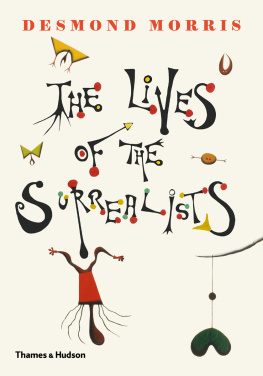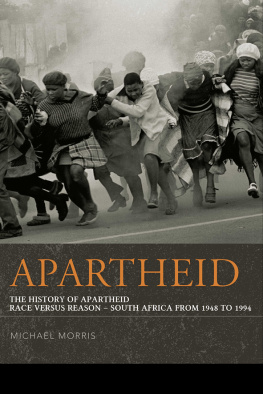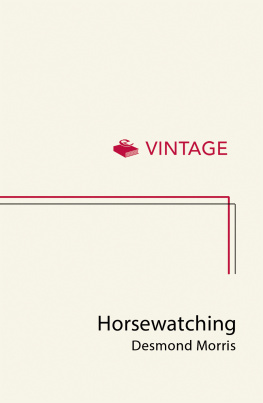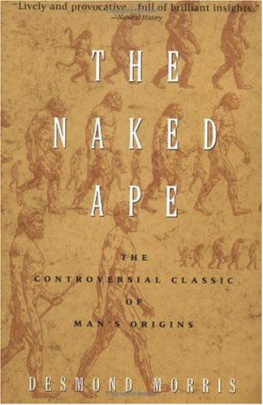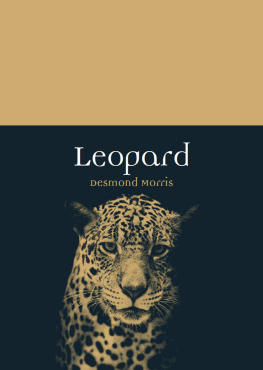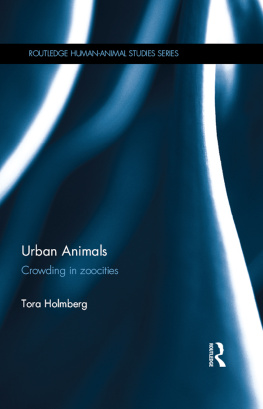CHAPTER TWO: Status and Super-status
In any organized group of mammals, no matter how cooperative, there is always a struggle for social dominance. As he pursues this struggle, each adult individual acquires a particular social rank, giving him his position, or status, in the group hierarchy. The situation never remains stable for very long, largely because all the status strugglers are growing older. When the overlords, or top dogs, become senile, their seniority is challenged and they are overthrown by their immediate subordinates. There is then renewed dominance squabbling as everyone moves a little farther up the social ladder. At the other end of the scale, the younger members of the group are maturing rapidly, keeping up the pressure from below. In addition, certain members of the group may suddenly be struck down by disease or accidental death, leaving gaps in the hierarchy that have to be quickly filled.
The general result is a constant condition o( status tension. Under natural conditions this tension remains tolerable because of the limited size of the social groupings. If,, however, in the artificial environment of captivity, the group size becomes too big, or the space available too small, then the status rat race soon gets out of hand, dominance battles rage uncontrollably, and the leaders of the packs, prides, colonies or tribes come under severe strain. When this happens, the weakest members of the group are frequently hounded to their deaths, as the restrained rituals of display and counter-display degenerate into bloody violence.
There are further repercussions. So much time has to be spent sorting out the unnaturally complex status relationships that other aspects of social life, such as parental care, become seriously and damagingly neglected.
If the settling of dominance disputes creates difficulties for the moderately crowded inmates of the animal zoo, then it is obviously going to provide an even greater dilemma for the vastly overgrown super-tribes of the human zoo. The essential feature of the status struggle in nature is that it is based on the personal relationships of the individuals inside the social group. For the primitive human tribesman the problem was therefore a comparatively simple one, but when the tribes grew into super-tribes and relationships became increasingly impersonal, the problem of status rapidly expanded into the nightmare of super-status.
Before we probe this tender area of urban life, it will be helpful to take a brief look at the basic laws which govern the dominance struggle. The best way to do this is to survey the battlefield from the viewpoint of the dominant animal.
If you are to rule your group and to be successful in holding your position of power, there are ten golden rules you must obey. They apply to all leaders, from baboons to modern presidents and prime ministers. The ten commandments of dominance are these:
You must clearly display the trappings, postures and gestures of dominance.
For the baboon this means a sleek, beautifully groomed, luxuriant coat of hair; a calm, relaxed posture when not engaged in disputes; a deliberate and purposeful gait when active. There must be no outward signs of anxiety, indecision or hesitancy.
With a few superficial modifications, the same holds true for the human leader. The luxuriant coat of fur becomes the rich and elaborate costume of the ruler, dramatically excelling those of his subordinates. He assumes postures unique to his dominant role. When he is relaxing, he may recline or sit, while others must stand until given permission to follow suit. This is also typical of the dominant baboon, who may sprawl out lazily while his anxious subordinates hold themselves in more alert postures near by. The situation changes once the leader stirs into aggressive action and begins to assert himself. Then, be he baboon or prince, he must rise into a more impressive position than that of his followers. He must literally rise above them, matching his psychological status with his physical posture. For the baboon boss this is easy: a dominant monkey is nearly always much larger than his underlings. He has only to hold himself erect and his greater body size does the rest. The situation is enhanced by cringing and crouching on the part of his more fearful subordinates. For the human leader, artificial aids may be necessary. He can magnify his size by wearing large cloaks or tall headgear. His height can be increased by mounting a throne, a platform, an animal, or a vehicle of some kind, or by being carried aloft by his followers. The crouching of the weaker baboons becomes stylized in various ways: subordinate humans lower their height by bowing, curtsying, kneeling, kowtowing, salaaming or prostrating.
The ingenuity of our species permits the human leader to have it both ways. By sitting on a throne on a raised platform, he can enjoy both the relaxed position of the passive dominant and the heightened position of the active dominant at one and the same time, thus providing himself with a doubly powerful display posture.
The dignified displays of leadership that the human animal shares with the baboon are still with us in many forms today. They can be seen in their most primitive and obvious conditions in generals, judges, high priests and surviving royalty. They tend to be more limited to special occasions than they once were, but when they do occur they are as ostentatious as ever. Not even the most learned academics are immune to the demands of pomp and finery on their more ceremonial occasions.
Where emperors have given way to elected presidents and prime ministers, personal dominance displays have, however, become less overt. There has been a shift of emphasis in the role of leadership. The new-style leader is a servant of the people who happens to be dominant, rather than a dominator of the people who also serves them. He underlines his acceptance of this situation by wearing a comparatively drab costume, but this is only a trick. It is a minor dishonesty that he can afford, to make him seem more one of the crowd, but he dare not carry it too far or, before he knows it, he really will have become one of the crowd again. So, in other, less blatantly personal ways, he must continue to perform the outward display of his dominance. With all the complexities of the modern urban environment at his disposal, this is not difficult. The loss of grandeur in his dress can be compensated for by the elaborate and exclusive nature of the rooms in which he rules and the buildings in which he lives and works. He can retain ostentation in the way he travels, with motorcades, out-riders and personal planes. He can continue to surround himself with a large group of professional subordinatesaides, secretaries, servants, personal assistants, bodyguards, attendants, and the rest part of whose job is merely to be seen to be servile towards him, thereby adding to his image of social superiority. His postures, movements and gestures of dominance can be retained unmodified. Because the power signals they transmit are so basic to the human species, they are accepted unconsciously and can therefore escape restriction. His movements and gestures are calm and relaxed, or firm and deliberate. (When did you last see a president or a prime minister running, except when taking voluntary exercise?) In conversation he uses his eyes like weapons, delivering a fixed stare at moments when subordinates would be politely averting their gaze, and turning his head away at moments when subordinates would be watching intently. He does not scrabble, twitch, fidget or falter. These are essentially the reactions of subordinates. If the leader performs them there is something seriously wrong with him in his role as the dominant member of the group.
In moments of active rivalry you must threaten your subordinates aggressively.



